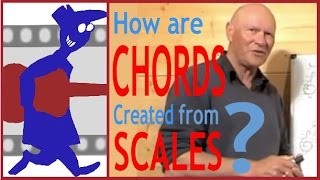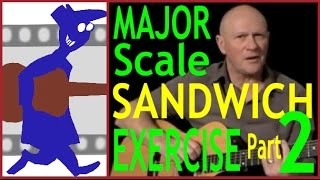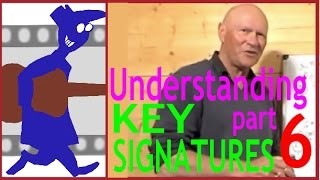Mack the Knife for Beginner Jazz Guitar - Part 3
Published on 26 January 2016
For more information from the source site of this video please visit:
http://secretguitarteacher.com/youtube/beginner/jazz/uWdXtUtxOQM/115625014-mack-the-knife-for-beginners-jazz-guitar-3.php
This is a sample of a lesson from the Secret Guitar Teacher site (see link above).
This lesson comes from the Beginners Jazz Course. This course is designed for guitar beginners who would prefer to learn Jazz right from the start instead of taking the more commonly-trodden path of playing blues or rock guitar for a few years first.
So this lesson assumes no prior knowledge or experience of playing the guitar.
Here’s the abridged transcript:
When approaching the task of improvising a solo, there are three principle sources of information to help us narrow down the search for the right notes to play.
You can concentrate on using the notes of the melody, home in on the notes from the underlying scale pattern, or emphasise the constituent notes of each chord.
In this lesson we are going to take a look at the first two of these approaches to improvise a solo over Mack the Knife.
Remember that in the last lesson, to help make the task of learning the melody easier, we focused in on each phrase. You may have noticed that most of the individual phrases in the melody only use three different notes.
So, let’s just take each group of notes from the melody and mess about with them. I’ll demonstrate what I mean by ‘messing about’ by working these first three notes over the F6 looped backing track that we used back in lesson 3.
Notice just how much variation you can get from just three notes by messing about with the order you play them in and the rhythms you use. Have a quick go at that yourself now - we’ll run that single chord loop for 30 seconds to give you a taste of using this trick.
On the Secret Guitar Teacher site you can access that loop backing track from the toolbox to the right of the screen and spend a little more time working with it if you like.
Let’s look at the next phrase. This phrase resolves on the Gm7 chord so we’ll mess about with it over the Gm7 loop backing track…Have a quick go at that yourself for 30 seconds …Here’s a reminder of the three notes to use
And on to the next phrase…This resolves back to F6 so we’ll use that loop again to work some ideas with this one. Again I’ll show you a couple of ideas and then leave the track running for you…
Here’s the next phrase…Which should also work fine over the F6 backing track…This one will work best over the Gm7. Slightly trickier as it involves four notes with quite a jump across the strings…
The next phrase is the same and the last phrase in the tune is one which we have also already practiced, as it appeared at the end of the first line.
So that’s a great little preparation exercise, but for site members, I strongly suggest spending some more time with each individual phrase against the single chord loop tracks that you can access from the toolbox.
When you’re ready to move on, the next stage is to put all these ides together working against the full backing track for Mack the Knife. Again, I’ll start out with a demo to give you a bit of an idea of what to go for and then I’ll leave the track running for you to try it out…
So that’s one way to approach improvising - using nothing but the notes of the melody as a point of departure. For many tunes it’s actually a very effective approach, for all its simplicity, and one that perhaps many experienced Jazz guitarists are guilty of overlooking.
The next easiest approach is to use the underlying scale pattern. The underlying scale normally contains most of the notes used in both the chords and the melody of a tune.
Working out which scale pattern to use is a little beyond the scope of this beginner’s course, so for now we are just going to suggest a pattern that will be easy to make work. For this tune, you won’t be surprised to hear we are going to suggest using the pattern for the G Dorian Modal Scale
In a sense, when you are working with the notes straight from the melody as we did for the first part of this lesson, you are, to a degree, relying on the choice of notes made by the composer of the tune. When using a single scale pattern over a tune, you have to make up your own mind as to which notes to use when and this means the level of listening required comes up a notch or two.
For now, I strongly suggest sticking to collections of just two or three different notes for each phrase though, much as we did before - but do experiment by taking these notes from any section of the pattern. Maybe like this…
Once you have got used to working with groups of two or three notes like that, then try stretching out your phrases to include a few more notes.
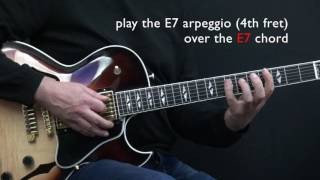 "Minor Swing" - Easy Jazz Guitar Lesson by Achim K...
"Minor Swing" - Easy Jazz Guitar Lesson by Achim K...
 Pat Martino Guitar Lesson: Blues Approaches Perfor...
Pat Martino Guitar Lesson: Blues Approaches Perfor...
 G.Valli -- comping jazz-blues -- Axe 165
G.Valli -- comping jazz-blues -- Axe 165
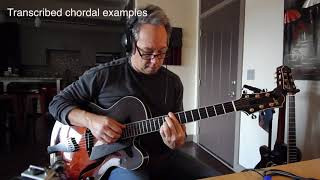 Have You Met Miss Jones - Barry Greene Video Lesso...
Have You Met Miss Jones - Barry Greene Video Lesso...
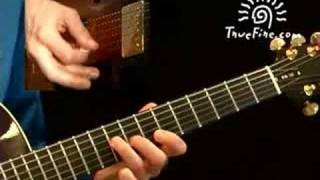 Jazz Guitar Lessons - Modal Solo 3 - Jazz Anatomy...
Jazz Guitar Lessons - Modal Solo 3 - Jazz Anatomy...
 Body And Soul - Chord Melody and Improvisation - J...
Body And Soul - Chord Melody and Improvisation - J...
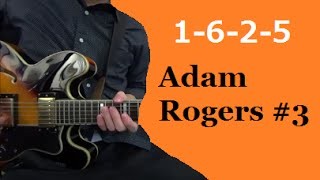 I VI II V (Pentatonic) - Adam Rogers #3
I VI II V (Pentatonic) - Adam Rogers #3
 Fast Fingers - Speed Picking Exercise, A Minor Pen...
Fast Fingers - Speed Picking Exercise, A Minor Pen...
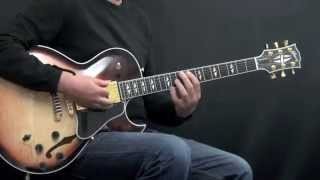 A Foggy Day - Achim Kohl - Jazz Guitar Improvisati...
A Foggy Day - Achim Kohl - Jazz Guitar Improvisati...
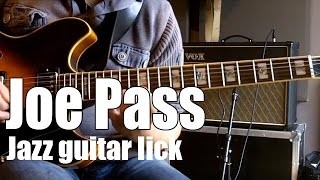 Joe Pass jazz guitar lesson # 2 | Dominant 7th lic...
Joe Pass jazz guitar lesson # 2 | Dominant 7th lic...

